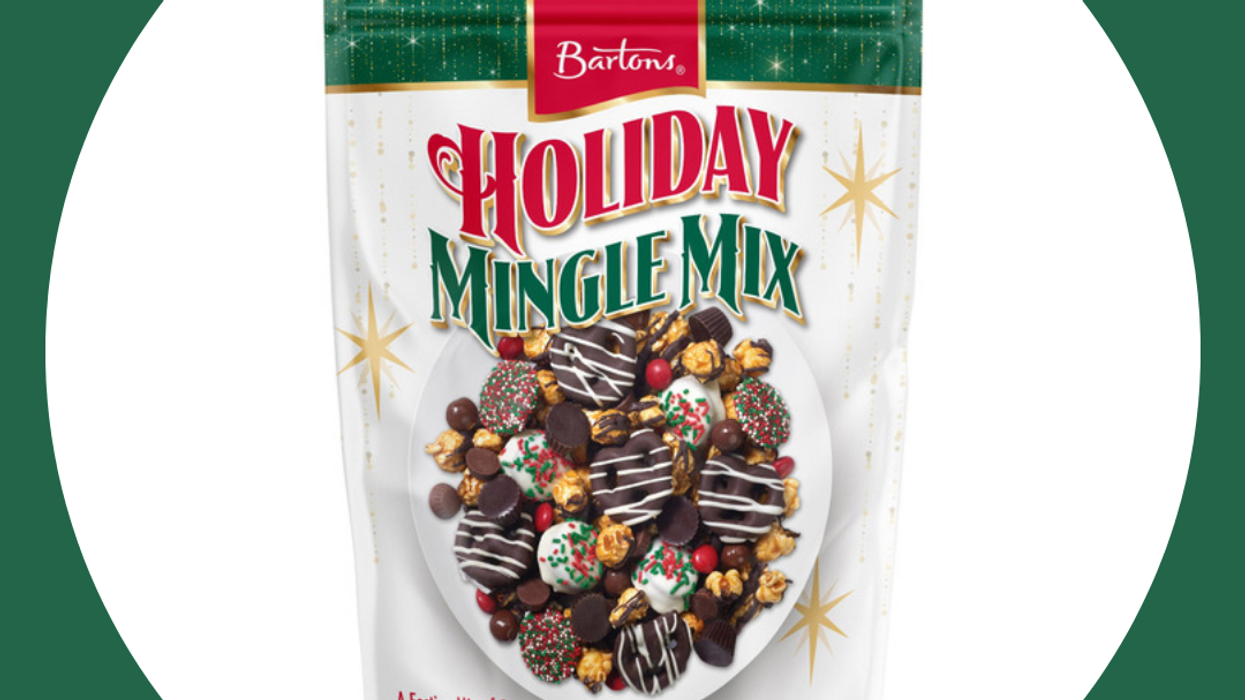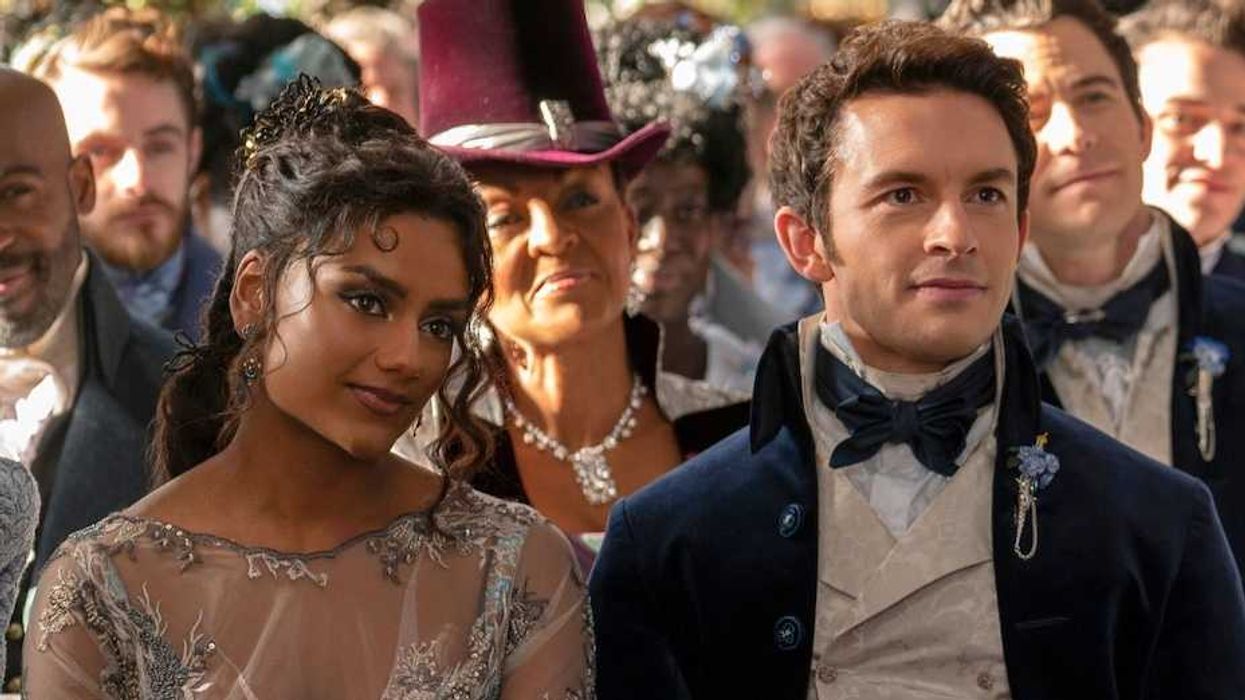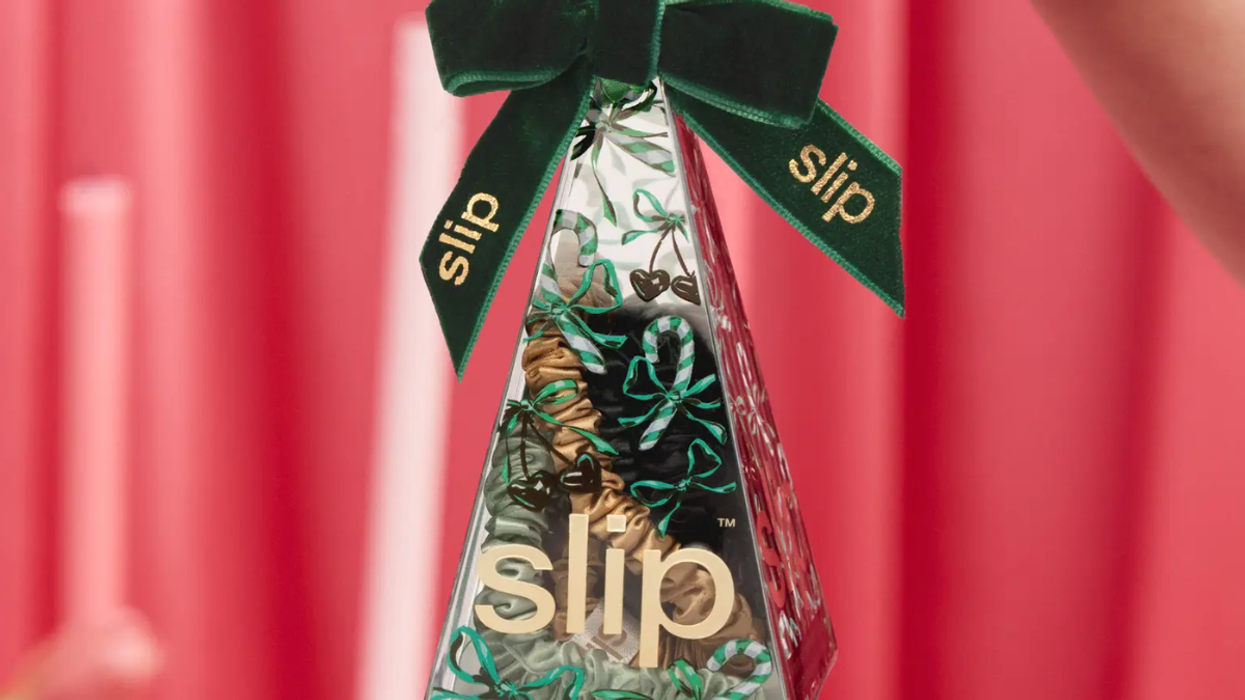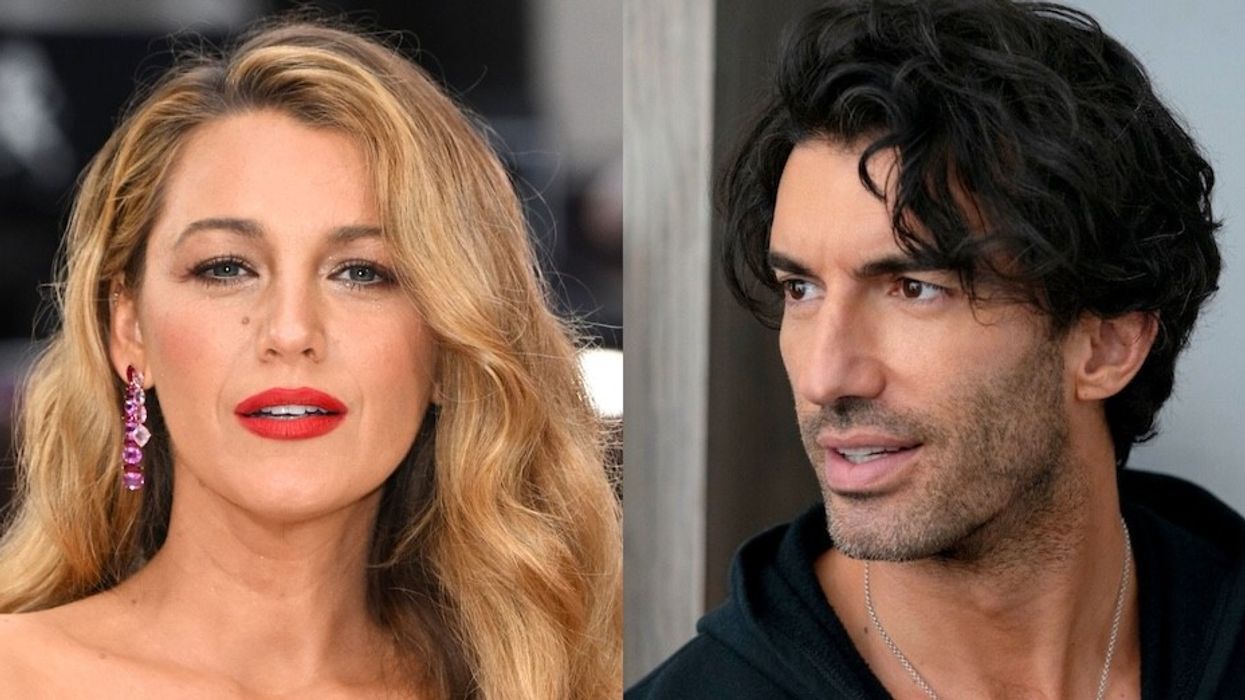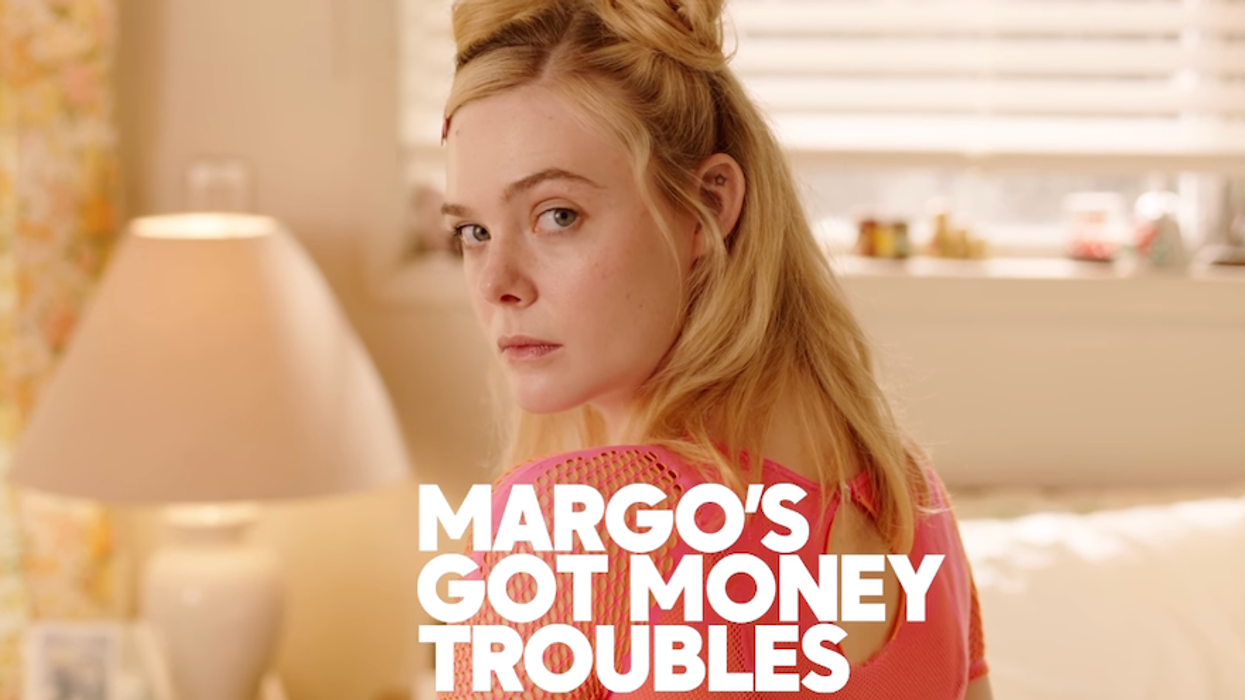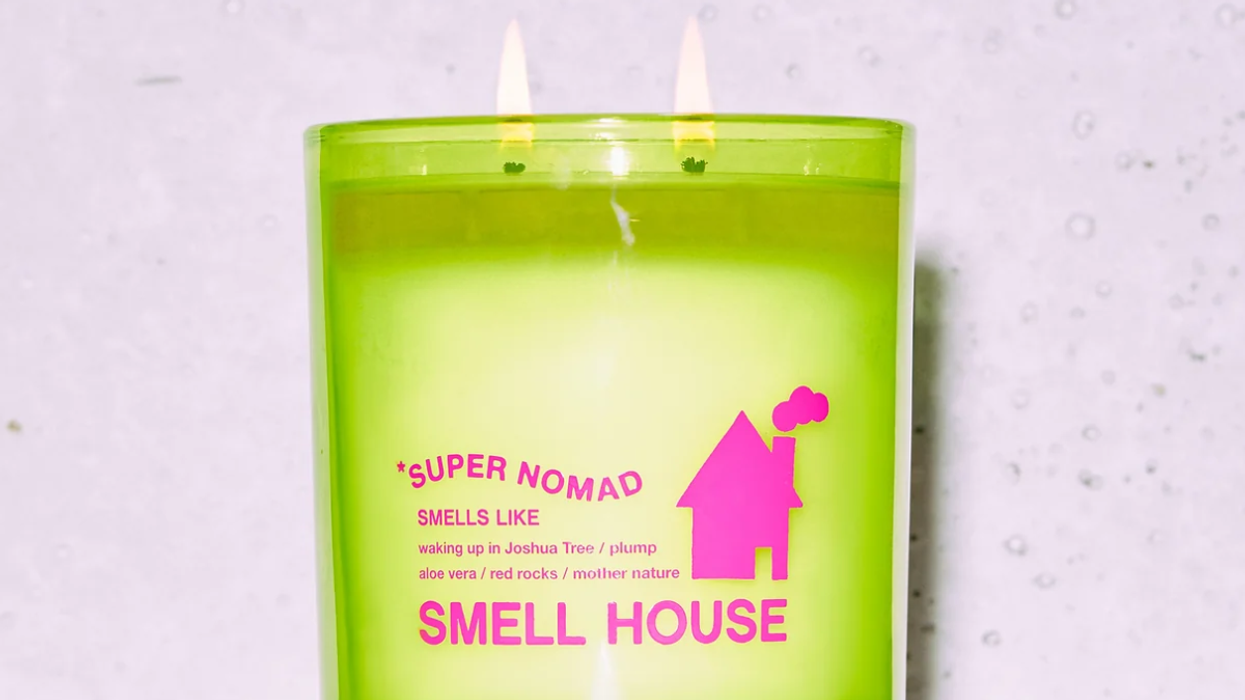"As an Indigenous woman, I feel like my story, my ancestors' stories — these stories need to be heard and they need to be seen."
Native Artist Jordan Craig On How Her Northern Cheyenne Roots Influence Her Work
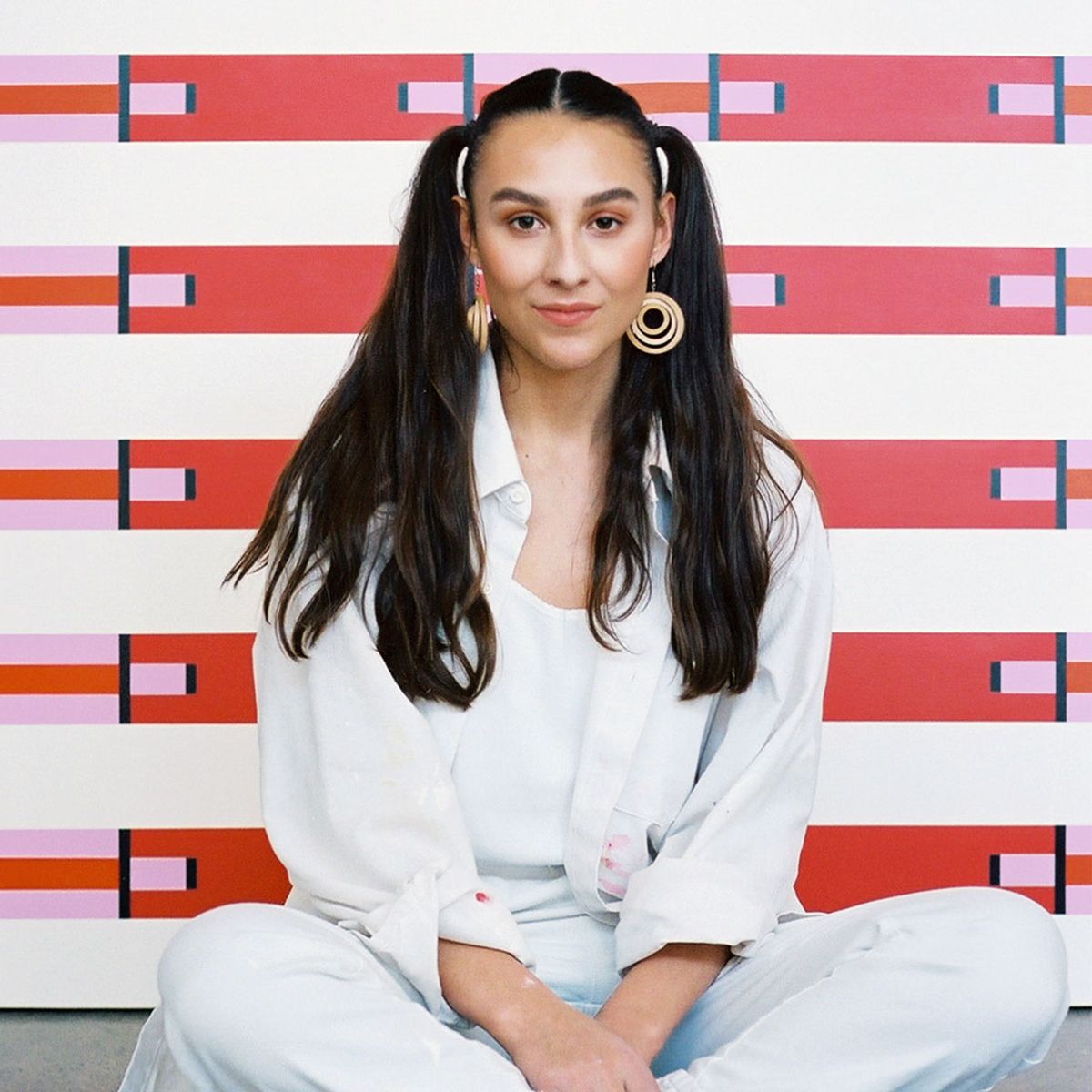
Native Artist Jordan Craig On How Her Northern Cheyenne Roots Influence Her Work

Geometric motifs, intricate patterns and inviting textiles happen to be three of my very favorite things. And as it turns out, I share those three loves with one extremely talented artist, whose large-scale works are a wonder to behold, created with precision, care, and a deep appreciation for heritage. In this edition of Creative Crushin', I'm honored to share the story and creative journey of artist Jordan Craig.
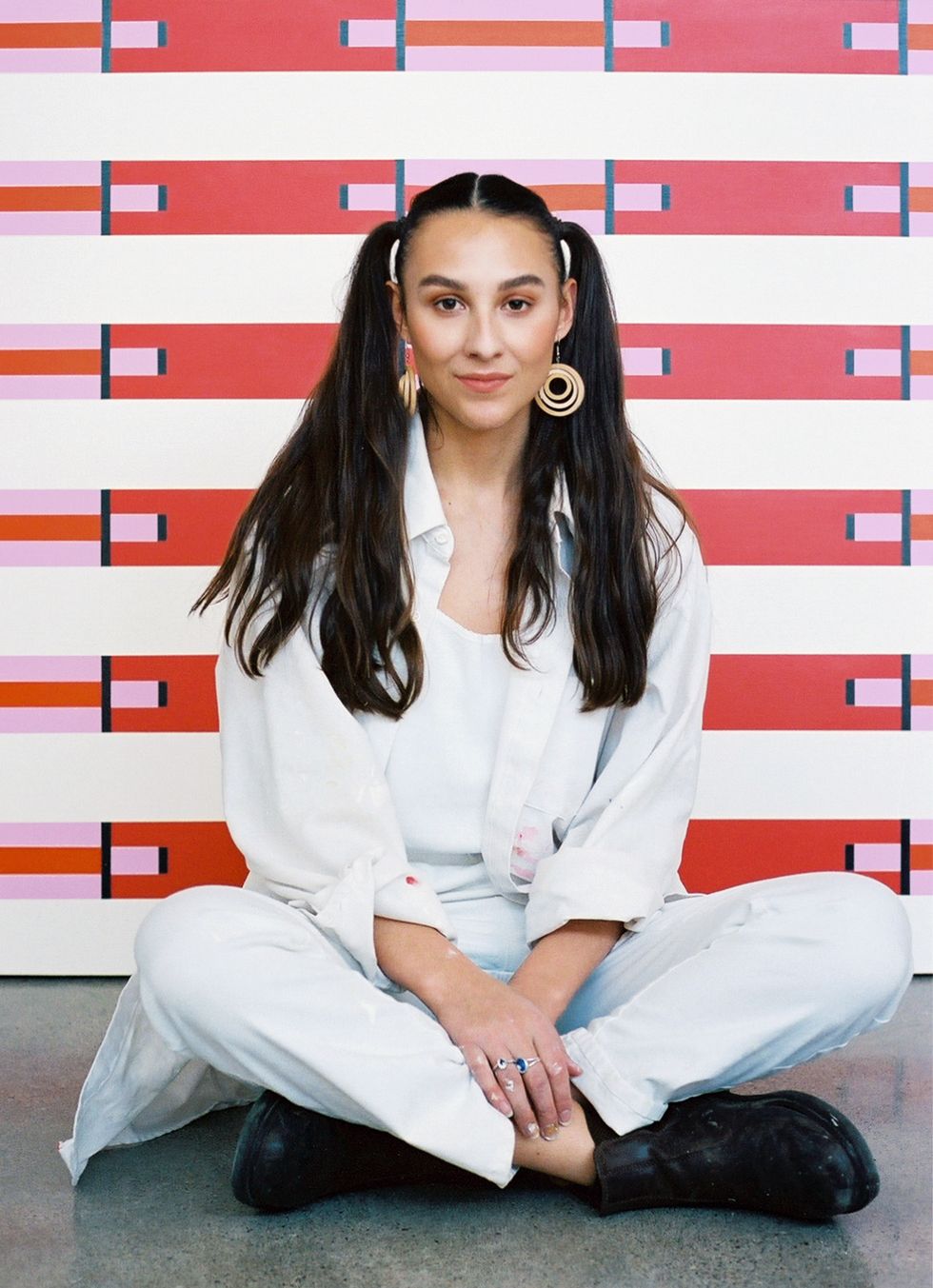
Anjelika Temple here, co-founder of Brit + Co, appreciator of patterns, and an artist who also hopped from residency to residency back in the day ;) I'm so excited to introduce you all to Jordan Craig. I first learned about her work through her recent collaboration with Rumpl, a sustainable outdoor blanket company that is all about saving planet earth and opting outside as much as possible.
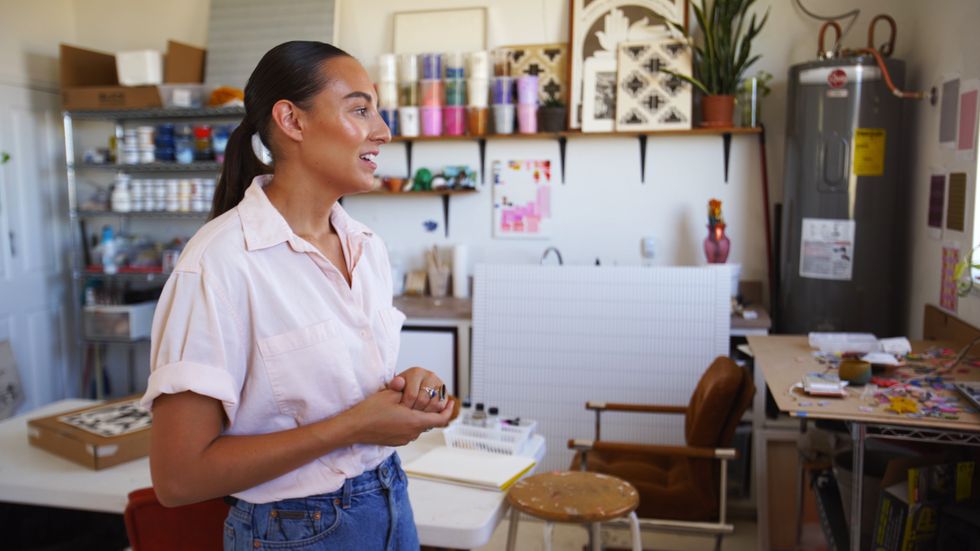
Read on to learn more about what inspires Jordan's work, where her journey has taken her, and what other creative side hustles she's got up her sleeve.
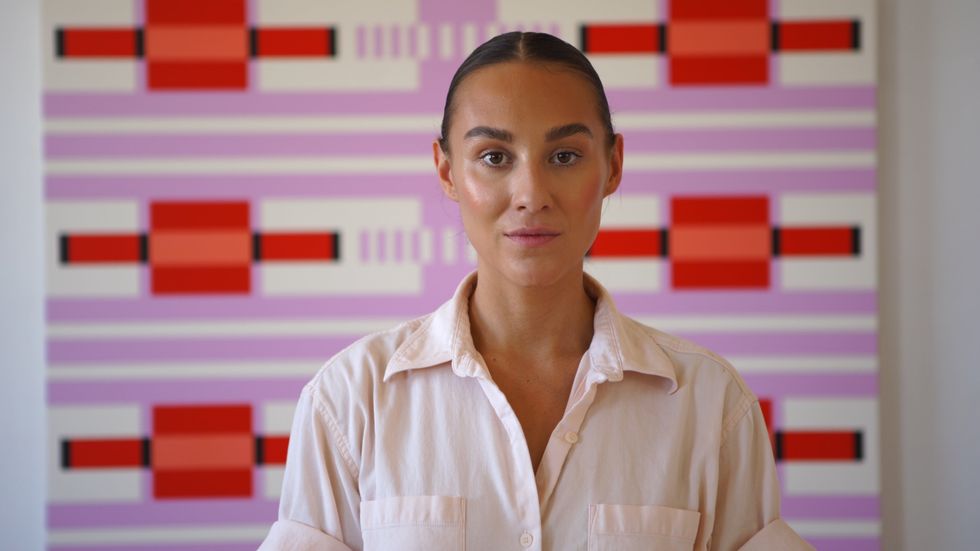
Anjelika Temple: First, foundations. Start us off with where you're coming from.
Jordan Craig: I grew up in the Bay Area with my two younger sisters and my parents. My mother is Northern Cheyenne and my father is Eastern European descent, most likely Norwegian. I went to Dartmouth for college and have bopped around doing residencies for the past four years. Now I'm based in Roswell, doing an artist residency here, part of the RAiR Foundation, and it's a one-year fellowship. I am 10 months in!
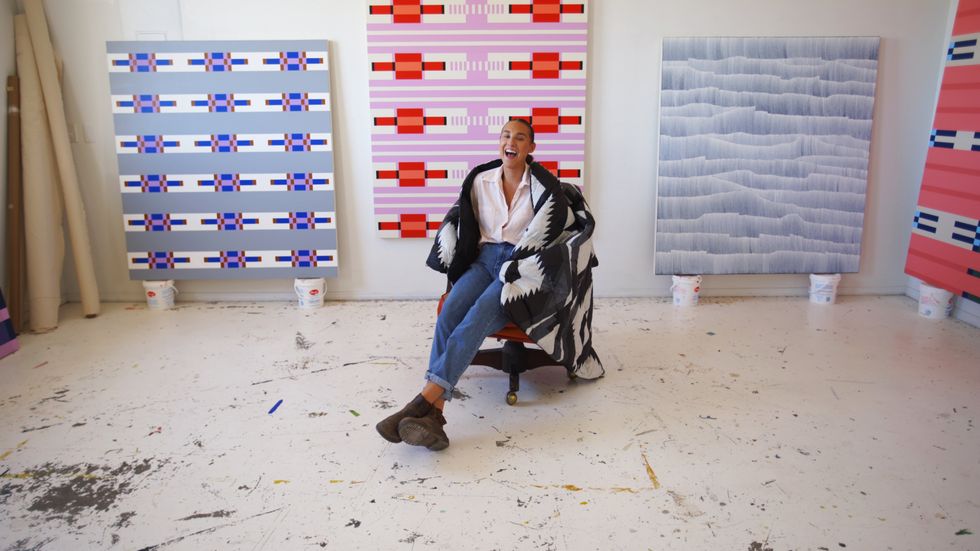
Anj: Did you always know you wanted to be an artist?
Jordan: So yes, and no, I never really had those plans to be a concrete artist. I feel like only recently, I started even saying, "I'm an artist." It feels kind of weird, and maybe you could relate. Because it just kind of sounds strange and abstract. What does that mean?
I actually called my mom this morning and asked, "When did I become an artist?" And she said, "Well, I would say you were four." Because I was always doing art and building houses and forts, and just drawing and painting with my sister growing up. And I grew up super shy, so I didn't really talk. So I was just making art quietly. I got held back in preschool because I literally didn't talk, it was a problem. So I started just doing art and excelled in all my art classes. I found a home there. Even at lunchtime, I was making art in middle school, high school. I took all the art classes you could take, my mom and dad were able to help me take additional art classes growing up. And then I went into college, undeclared, clueless, scared, and I didn't know what I was going to study.
At Dartmouth, I had my first course with an amazing professor named Esmé Thompson. And she basically kind of changed how I saw art, how I saw myself as potentially an artist, or even just as a creator and challenged me to think completely differently. I wouldn't say that was when I decided to become an artist, but that was my first real experience being in a really highly creative environment that was really challenging for me, because I think in high school when you could draw really realistically, that was cool, but this was the first time I could explore abstraction. Ever since then I've kept finding opportunities and residencies to continue my practice, to grow, to learn, and that's where I'm at now, I've been doing residencies for nearly four years straight.
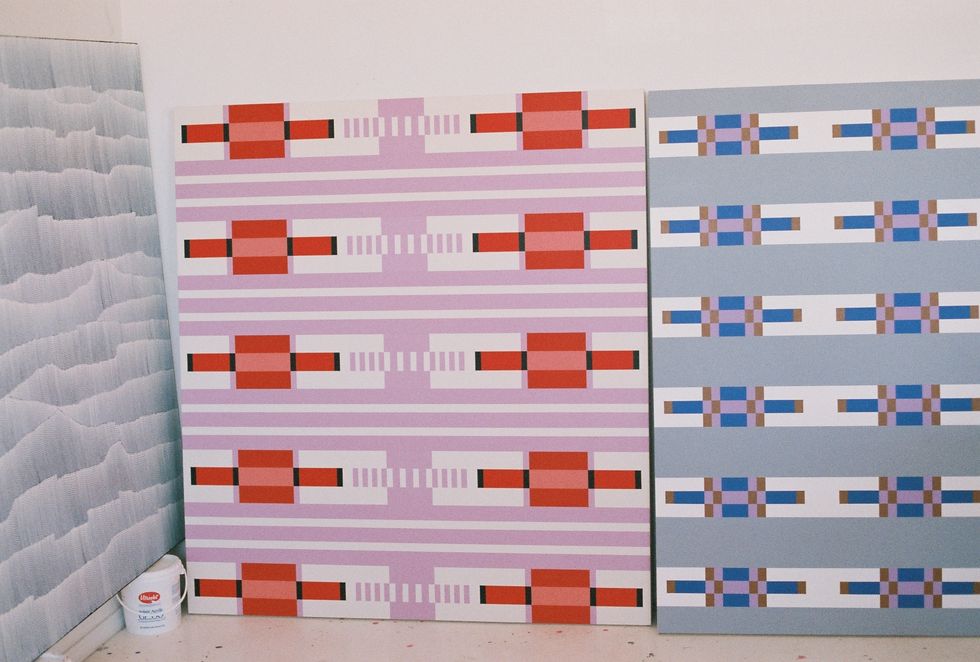
Anj: Talk to me more about what you love about making art, and what the creative flow state feels like for you.
Jordan: I naturally have a lot of energy. I was a gymnast for 10 years, pole vaulter, athlete, just constantly having physical things to do. Art gives me that release, I almost need it to like physically, emotionally and mentally to stimulate me and burn off that extra energy I have. I'm that weird person that wakes up and is just like, "I'm ready." I have this stream of energy, and people will always comment on that. For me, it's normal, but I have to find a way to kind of dissolve that energy because I don't really feel like running or swimming, I just want to do it through art and that's what I've been focusing on.
To speak on the flow, I'm such a visual person and I'm not very good with my ears, auditory learning and all, that is my weakness. So when I'm fully in the flow, I tune out all sounds. A podcast will end or the radio will go to static and I won't notice for, maybe hours. And then I'll realize, "Oh, it might be nice to listen to music right now," and I might put something on but when I'm in that state, it's like time doesn't stand still, it just changes. I guess the feeling of time changes and I'm just really letting my brain and my hands work together and I can kind of remove everything else. The connection between my brain and my hand strengthens, and I can just eliminate all the other noise literally and metaphorically I guess.
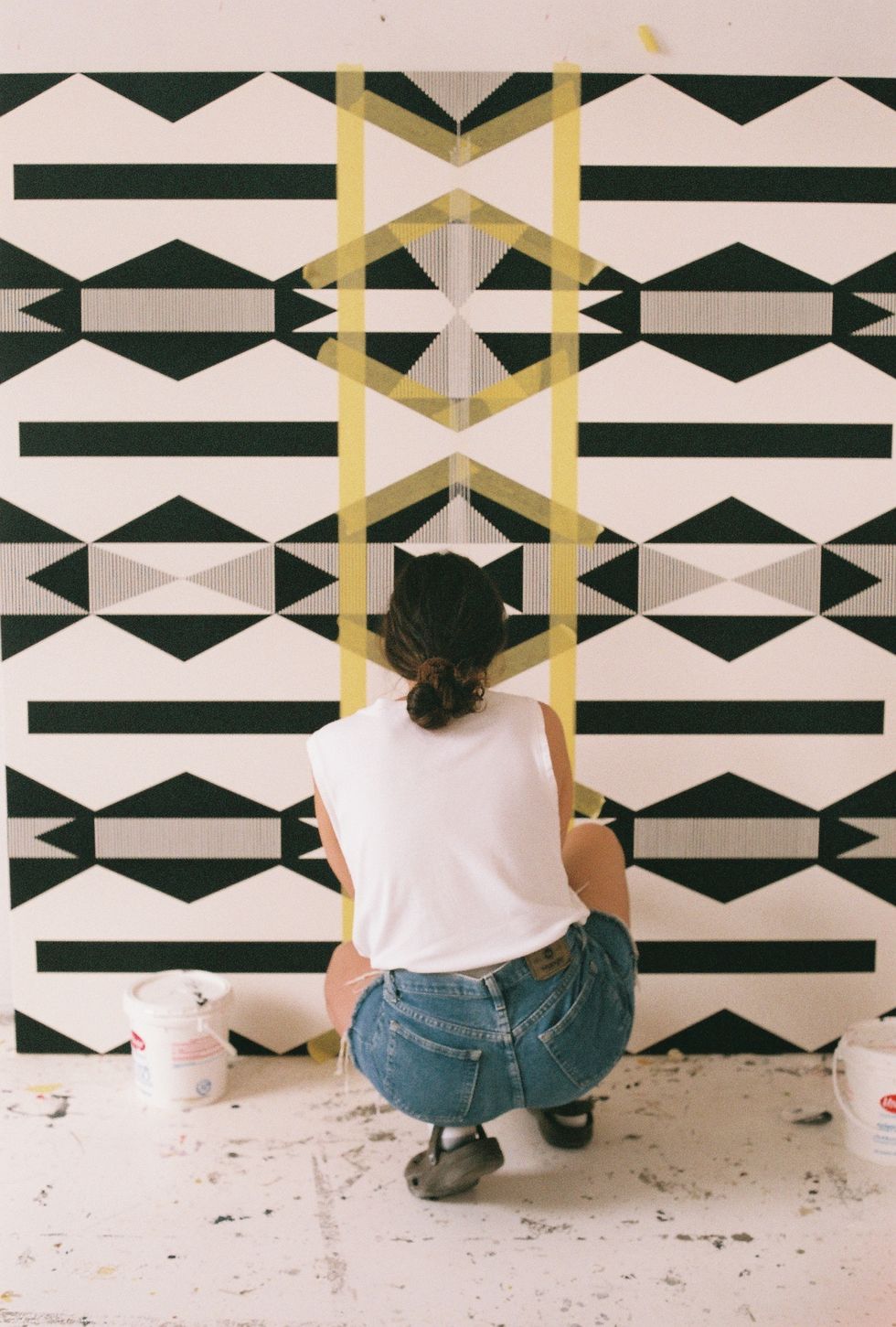
Anj: I love that, and also love how large scale your work is. Tell me more about your actual process, how are things made?
Jordan: I start everything digitally. So everything I make, and this could be speaking to my control freak tendencies, and my perfectionist tendencies, but everything I make is completely planned. I'm not a very sporadic just person, I want everything to be planned. So when I make something digitally, whatever I make on my computer, once I start painting, it's just execution mode. I already know what it's going to look like.
The process starts with me studying first, I do a lot of research in different Indigenous art collections, studying different historical objects, contemporary objects, bead work, basket weaving, all sorts of different things that I'm really intrigued by. And then I make my own pattern in Photoshop based off of those inspirations. Then I prepare my canvas, start that whole side of things, which is like the physical, almost labor part of it, which I really enjoy. I use my ruler and just all my measuring methods and jigs to get all those perfect symmetry in my work.
It is very meditative to have to mark my four corners, know my center points. And every piece is like a big puzzle. I love putting it all together and figuring out what goes first, what goes last. What's my first mark? How can I make this as seamless as possible? What color is going to come first? How I'm going to tape that, how I'm going to get around an edge, or whatever the challenge is — I love the process of figuring it out.
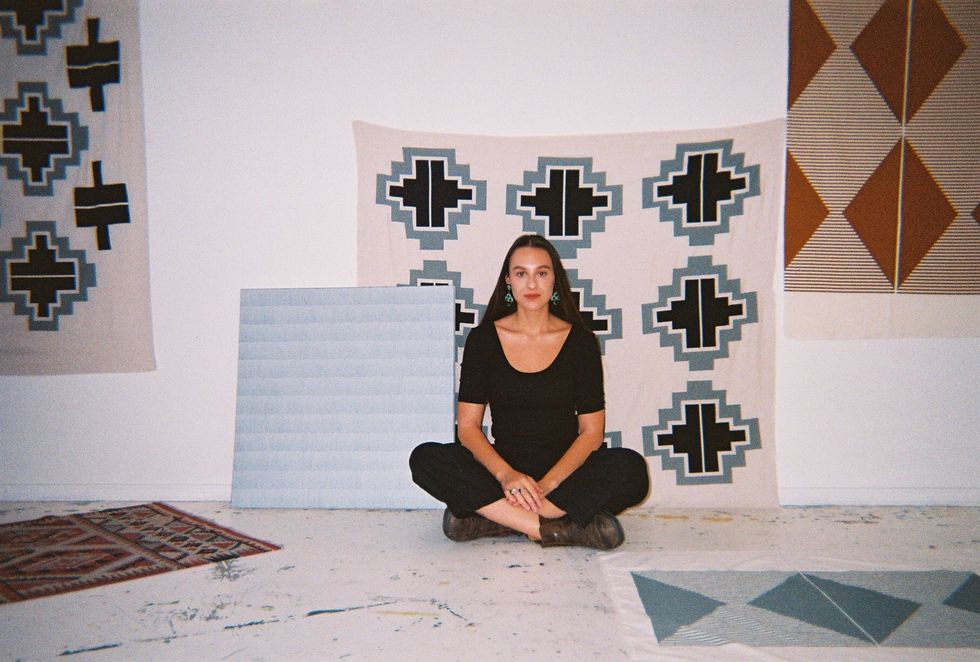
Anj: Talk to me a little bit more about how your roots inspire your work and further guide your process.
Jordan: I'm Northern Cheyenne. My mom is, well, it's an interesting story because she was adopted through a Catholic charity in the '60s. So she entered into a very eclectic family, mostly Indigenous children with white parents. In that, she totally lost her culture; it was basically stripped from her. She was in rural Montana, and she grew up with mostly white people. And so she didn't have those connections until she was older and able to reconnect with her Native family. Now we're in contact with my grandma, who's on the reservation and we're really lucky to have been able to make those connections. But that leaves my mom figuring it out, and then me and my sisters figuring it out and then our kids are figuring out, because that culture has basically been cut. Much of my work is about researching and learning about my culture and reconnecting. So it's like my coming back, and even my mom's coming back to where we're from. I think maybe this is why my work is very digitized and symmetrical and perfect, because it's my way of removing myself from the original crafts. It's like my way of respecting the original artists.
I've been lucky to connect with all these incredibly powerful and amazing, inspiring Indigenous people and artists. It's just been such a learning experience through my art to just open myself up to all sorts of different cultural things I didn't know growing up.
Most recently I've been exclusively studying Cheyenne and Plains Indian beadwork, so that's where I'm getting all these really luscious pinks, and the bright blues and cobalts and just these really beautiful colors. I used to work almost exclusively in black and white, and now I am exploring color and pink is my new neutral. So that's been huge and transformative. I only started working in color last year, and that is inspired by the objects I'm looking at, because before I was studying Pueblo pottery which is all Southwestern neutrals. It's been great to open up my practice to color and to the exploration of color.
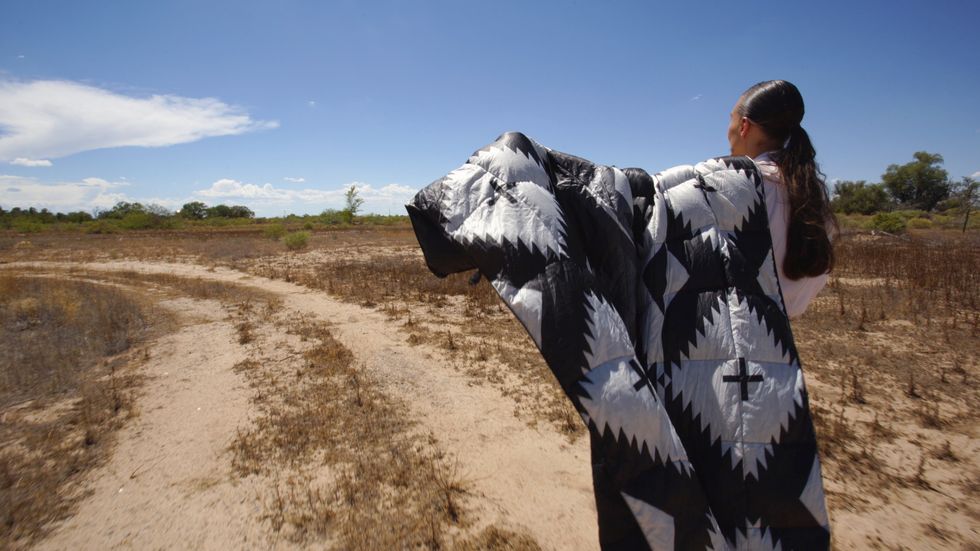
Anj: Tell me more about your collaboration with Rumpl.
Jordan: Rumpl reached out to me a little bit over a year ago with a new initiative around working with Native artists. As part of the first launch with their Rumpl Art Division (RAD), they are working primarily with native artists who identify as female. A portion of sales from these blankets goes to First Peoples Fund, an organization that funds and supports education and learning in native businesses and culture. I mean, they're doing incredible things, they're working really hard and they're just consistently growing and... they're changing lives, which is really amazing.
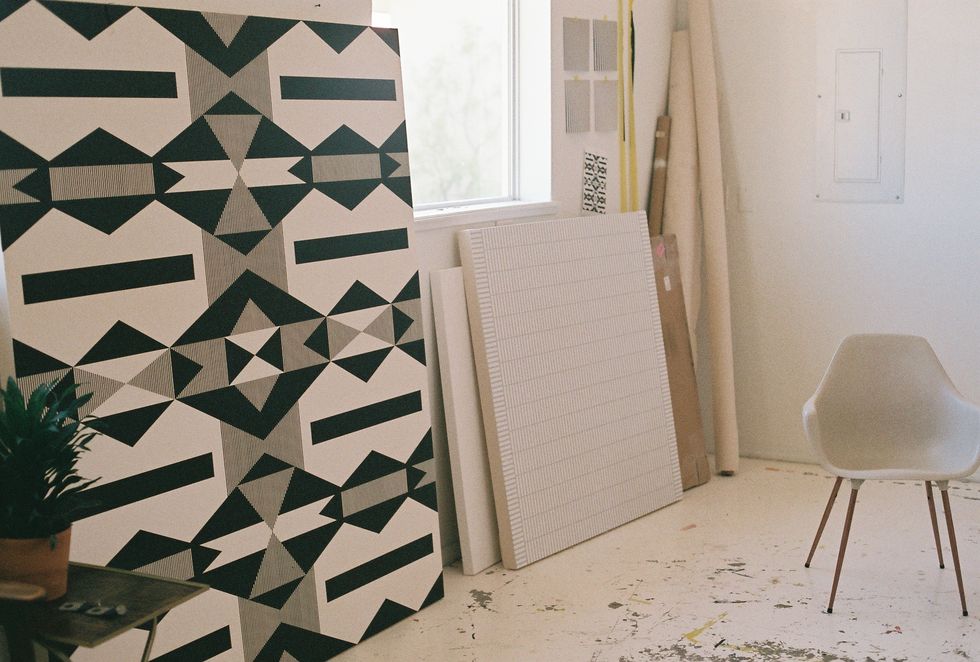
Anj: How would you define your mission as an artist?
Jordan: Well, I mean, as an Indigenous woman, I aim with my work to really celebrate Indigenous design and story. I feel like my story as well as my sister's stories, my grandmother's story, my ancestors' stories, these stories need to be heard and they need to be seen. I feel our nation, our world has been trying to erase native culture, language, art for as long as this nation has been even here. So, with someone like me putting out this work, I do think it's transforming how we see native art today and what it can be, and also because of the ties with historical design, and just obvious from the past, it's also shedding light on and celebrating what was the past as well.
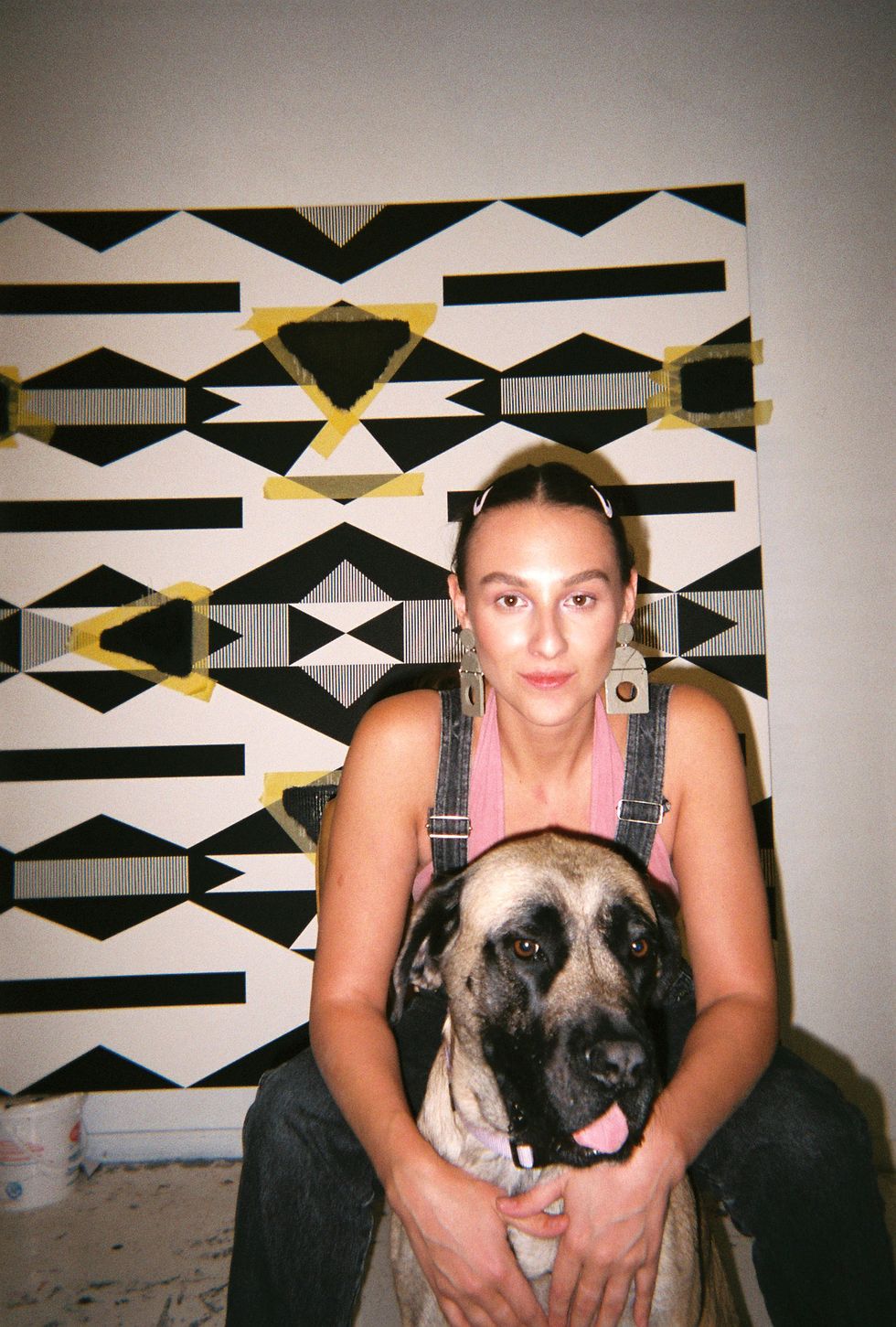
Anj: Working as a solo artist can sometimes be isolating. What does your support system look like? Are there artist communities or groups that you turn to for support and inspiration?
Jordan: For me, I'm learning that I'm so not good in isolation. I thought I could just go anywhere and just be by myself and paint. But I really do fuel myself off of other people's energies, conversations. I learn so much just from having dinner with someone. And so when that got cut off, it's been really challenging. Up until this year, I've always had those communities and I've always had friends and family close by and living with people. And so when I moved to Roswell, New Mexico, by myself, it was really challenging. To help with the isolation, my sister was able to move in with me for a full six months. As soon as she moved in, I just immediately saw my mental health, my productivity and my inspiration increase beyond measure. I think I'm learning how to cope with isolation and that I need to balance it. I love having time by myself in the studio, and I love, I mean, I can work extremely intensely for 10 hours by myself, but I need a lunch break with people or I need to go on a walk with someone.
Prior to COVID, I worked in a lot of communal print shops. When I toured Europe doing residencies, I did a whole project based in communal shops. There's a really beautiful community around printmaking, so I would travel to a random country, and enter into that community and automatically have friends. The print world is so specific, so you have something in common already, which makes it easy to make friends and build a relationship. My print friends, my family and all the other incredible native artists that support me and inspire me in my life have really helped.
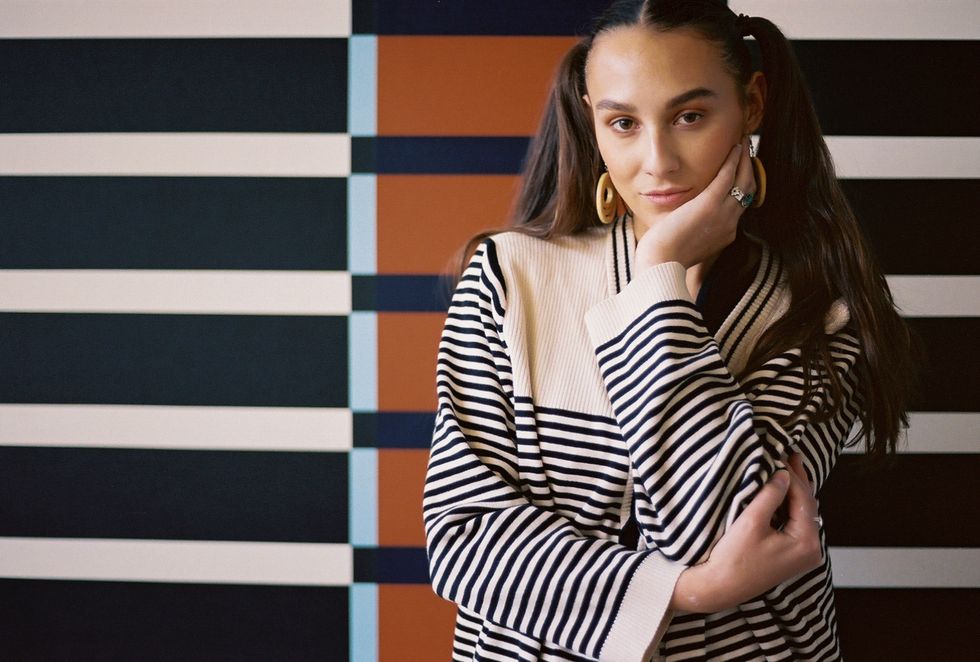
Anj: What advice do you have for fellow artists who are trying to find their voice and creative niche?
Jordan: I have to give credit to my mentor, Enrico Riley. He was my painting professor and my thesis advisor and just a constant resource for me, even today. I was making super abstract prints at the time and he directed me over to the window and had me look at the geometries of the buildings. Just so simple. And he said, "Okay, if you can just look and root your work in something physical, you'll be able to understand your work better, and it'll be rooted in something physical and real. And then the work will become real." Just the simple advice of looking and actively looking has really transformed how I see everything.
Whether it's color, shape, design, wallpaper patterns I like, I am always on the lookout. Then fast forward a year, a few months, I was painting a portrait of my first houseplant, like this sad pothos plant. I used this fabric that looks like the morning star symbol (my tribe symbol) and painted a repetitive pattern in the textile that was underneath the plant. I started abstracting that to make the background of this portrait that I don't think I ever finished, and he was like, "You're onto something here."
My advice is if you could look and actively look and then look for things that you really feel attached to or have a personal connection with, that will really help your work evolve, and you'll feel more like you have a purpose in your work. And I think that's something I've been really grateful to have.
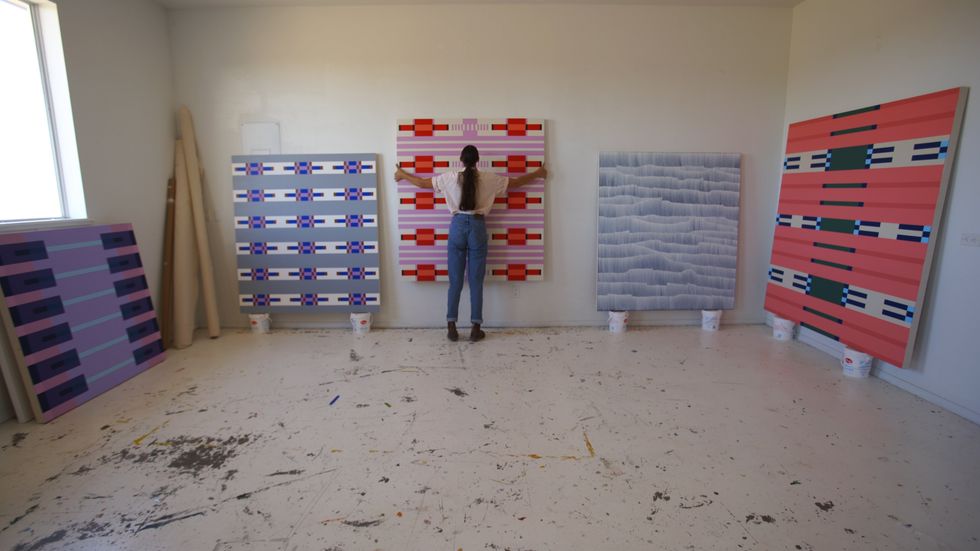
Anj: When you get creatively blocked or burnt out, how do you reset? Do you have tips you can share?
Jordan: This is a two fold answer. I am the type of person that can go 14 hours in the studio every single day, five weeks straight, painting, just microwaved enchilada in hand, no pauses. And I'm a really intense and sensitive human, so when I'm involved and on it, I'm really on it and no one can really take me away from that. Then I'll go like a month or two not wanting to make anything because I'm interested in something else, so I think I've been able to finally, in my practice, accept that I do not have to be making all the time. When I find myself becoming too addicted to the work, I know I need that reset for my mind, for my body, and just I need to kind of step back.
When I need to reset, I have one series of works I like to work on throughout, and I call them my dot drawing series. I make them with oil paints and Q tips, and it's completely processed based. It's extremely meditative and stimulating, and I don't have to think at all, I have to maybe make some color decisions, but once I start, it's basically like I'm on cruise control, and I don't have to think and I can just totally relax and meditate and cherish that time with the canvas. It's really great when you can just totally shut off your brain and be productive. For someone who, like me, is a workaholic and likes to be active, I recommend having something in your practice or even just your hobbies or your life, or your activities, that you feel productive doing but you don't have to creatively burn yourself out.

Anj: And finally, tell me more about your other business, Shy Natives.
Jordan: I'd say I balance my creative life with two careers. So I'm pursuing Fine Arts full time, but then I'm also the creative director of Shy Natives, the brand I co founded with my sister, Madison, and we're launching this year, and it's a lingerie line uplifting indigenous women bodies, voices, stories, and so there's a lot of overlap happening.
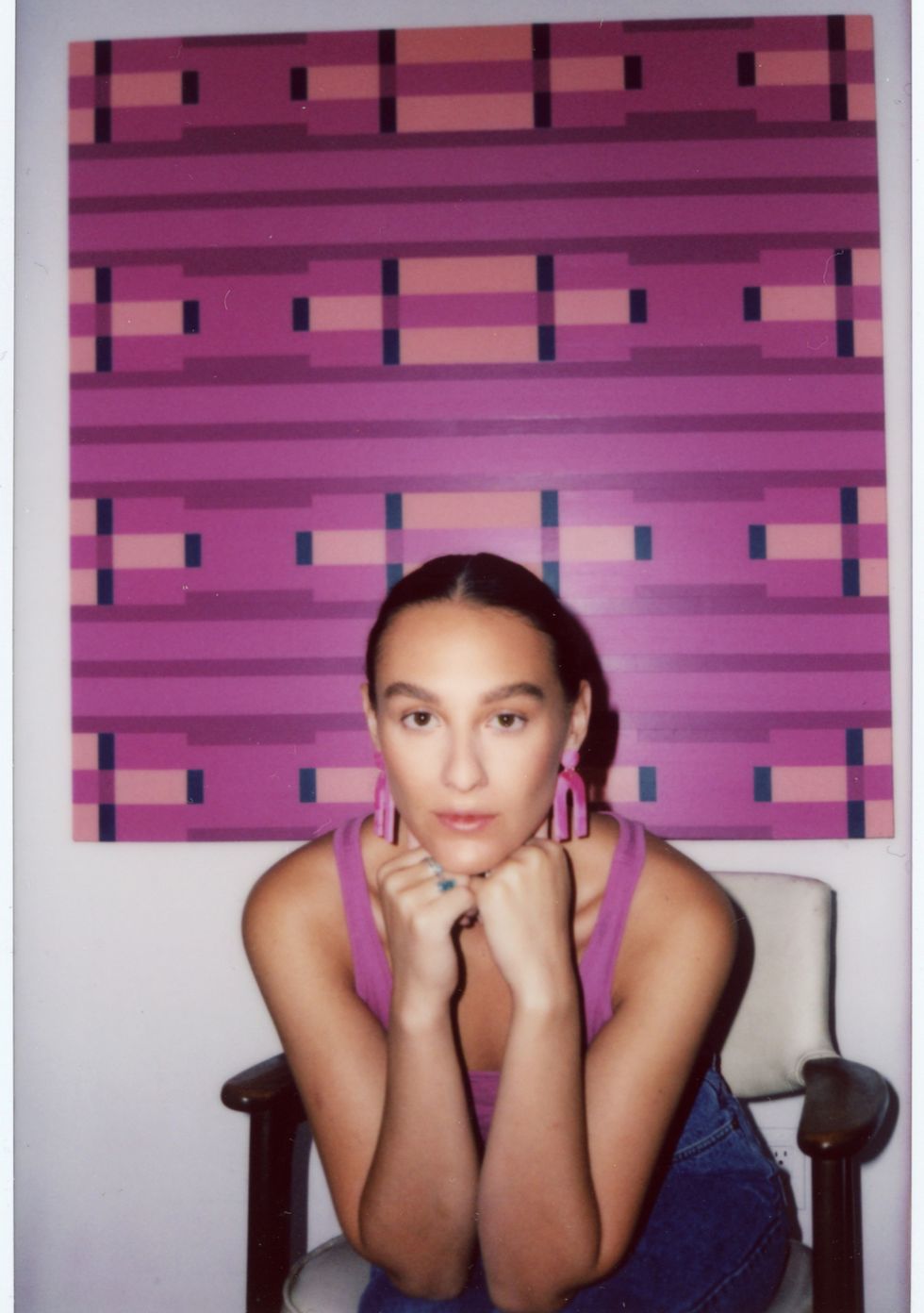
See more of Jordan's artwork at @jordananncraig on Instagram and at jordananncraig.com. And be sure to check out and shop @shynatives for bralettes, accessories and more.


